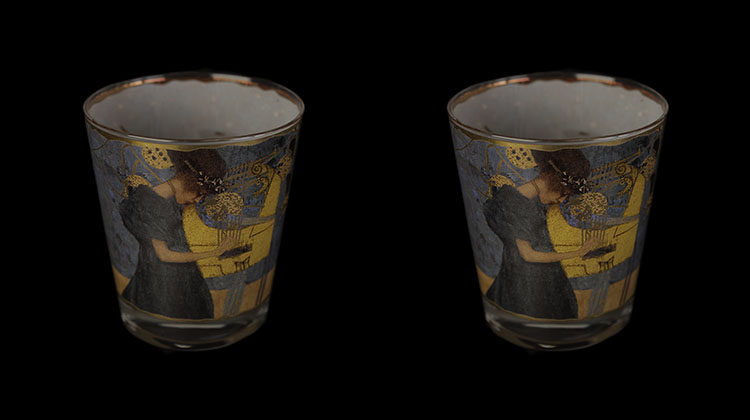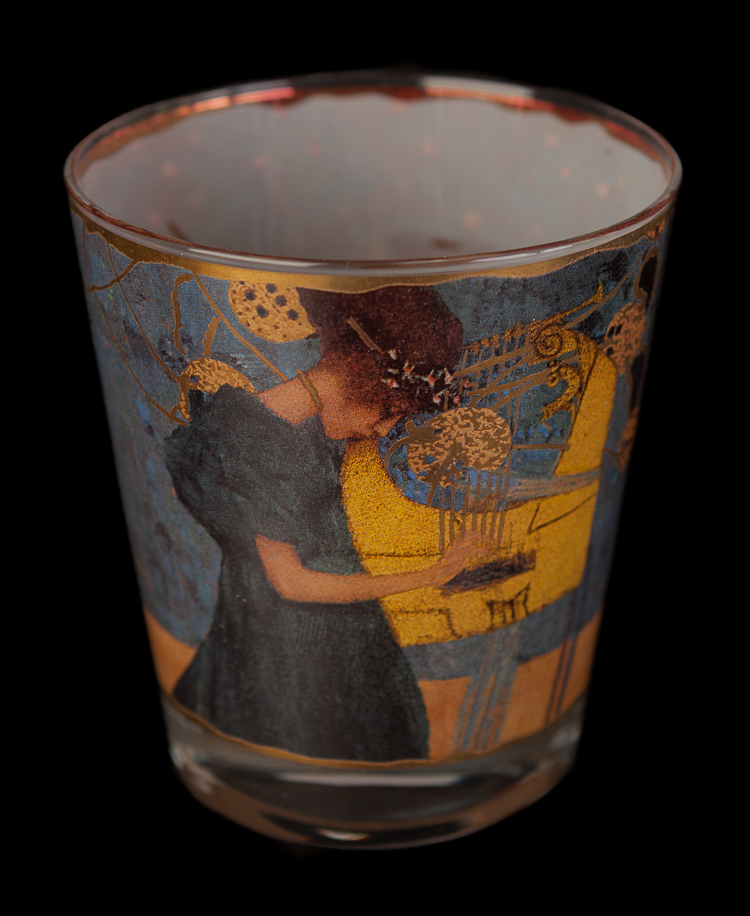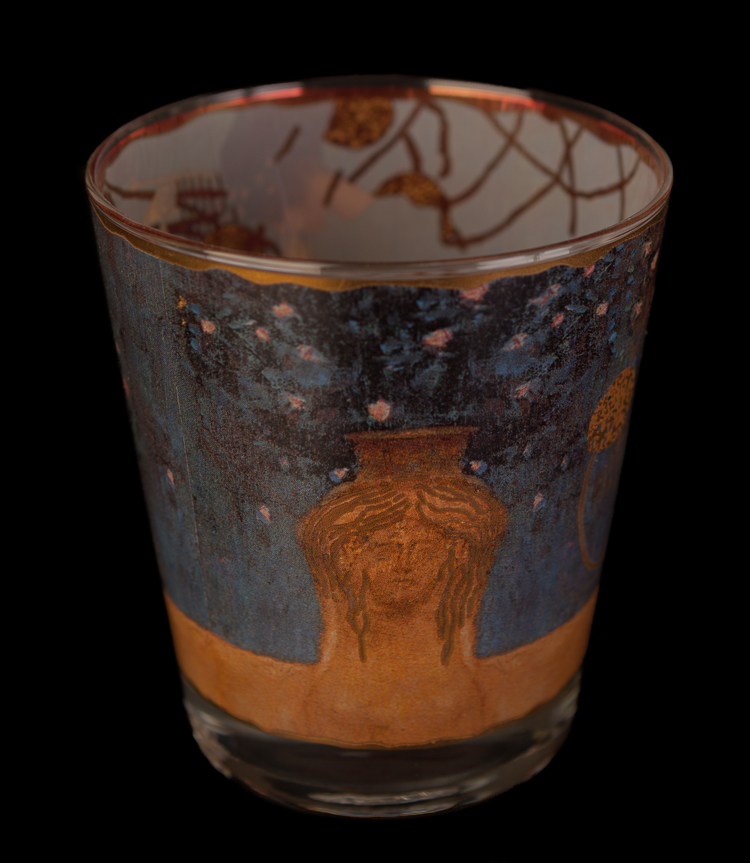Tel : (+33) 4 94 63 18 08
9am - 6pm from Monday to Sunday
All products Gustav Klimt • Products of the topic Candle holders
2 KLIMT Tealight Holders or glasses : Music
REF : KLIMT-GOEB-34
In stock
Only 1 in stock
Unavailable
39,90 €
2 glasses or Tealight Holders.
Both uses are possible.
H : 10 cm
Ø : 8.5 cm
We are experienced in shipping fragile items worldwide.
Our shipping charges include insurance.
We guarantee delivery in good condition.
Discover the artist's categories
Gustav Klimt
Additional cultural and artistic information about the artist
* * *
Main works
Pallas Athena (1898): Symbol of the Viennese Secession, representing an archaic and powerful goddess.
Philosophy, Medicine, Jurisprudence (1900-1907): Series of controversial monumental paintings commissioned by the University of Vienna and criticized for their eroticism.
Beethoven Frieze (1902): Mural tribute to Beethoven, combining music, architecture, and painting in a total work of art.
Portrait of Adele Bloch-Bauer I (1907): Example of the Golden Period, famous for its decorative gold motifs and Byzantine style.
The Kiss (1908-1909): Iconic masterpiece by Klimt, illustrating a couple intertwined in an ornamental love scene.
Artistic movements
Gustav Klimt is an emblematic figure of Symbolism, Art Nouveau movement, and one of the founders of the Vienna Secession. His style is characterized by the use of ornamental motifs, the application of gold leaf, and a sensual approach to the representation of women.
Inspiration, influence
Klimt was initially inspired by Hans Makart, then discovered artists such as Félicien Rops, Max Liebermann, Rodin, and Böcklin. The discovery of Byzantine mosaics in Ravenna deeply influenced his use of gold and decorative motifs. His works also show the influence of ancient Greece, Egypt, engravings of Albrecht Dürer, and Japanese art (Rimpa).
His contemporaries
Klimt evolves alongside Viennese artists such as Koloman Moser, Josef Hoffmann, Egon Schiele (whom he mentored), and Carl Moll. Together, they founded the Viennese Secession in 1897, with the goal of breaking away from the dominant academicism in Vienna and promoting a new form of art.
To keep in mind
The golden period of Klimt, marked by works like The Kiss, is considered the peak of his ornamental art. Unique in the scale of what he changed in the world of painting, Gustav Klimt is one of the main figures of Modern Art.
To go further
Two films talk about the artist and his work: Klimt by Raul Ruiz in 2005 and Woman in Gold by Simon Curtis in 2015.
Biography of Gustav Klimt
Gustav Klimt
Gustav KLIMT was born in 1862 in the outskirts of Vienna, Austria.
His father was a chaser goldsmith and his mother pursued a lyrical career; just like him, one of his brothers would become a painter.
Immersed in this artistic environment, it is natural that he follows this path and enters the decorative arts school of the museum of art and industry in Vienna at the age of 14.
He made a living by making portraits from photographs before opening a workshop with his brother, Ernst. Together they carried out numerous joint works, especially for theatrical frescoes. KLIMT would maintain throughout his life a taste for large-scale works, almost monumental.
In 1892, his brother Ernst and his father passed away, plunging him into a deep crisis, even though his work was enjoying great success and recognition with numerous awards.
But Klimt remained unsatisfied, finding that his art remained too close to a stylized expression, which he considered overrated, inherited from a time that was no longer or would no longer be, very soon....
From 1897, he entered an extraordinarily creative period that saw him produce more than 4000 drawings in less than five years. His themes were then eroticism, love, and the representation of the human body in all its fragility.
Accused of being a pornographer by the bourgeoisie and conservatives, he nevertheless continued on this path, especially with the creation of the "Secession" group, which echoes other groups of the same name, created mainly by German expressionists.
It was in that same year, 1897, that he met Emilie Flöge, who would remain his companion until the end of his life and of whom he made only one portrait.
At the dawn of the 20th century, he began to exhibit throughout Europe and to find recognition that Austria no longer granted him.
In 1905 in Berlin, he received the "Villa Romana" prize; in 1906, he became an honorary member of the royal Bavarian academy of decorative arts in Munich; in 1908, he received the gold medal for "The Three Ages of Woman" at an art exhibition in Vienna; in 1911, he won first prize at an international exhibition in Rome.
His work remains today (see the sale of the Portrait of Adele Bloch-Bauer, in 2006 in New York) recognized and admired as the trigger, and even the symbol, of all the movements breaking with the old pictorial tradition that emerged, from the beginning of the century to the First World War.
(c) Natacha PELLETIER for PASSION ESTAMPES










































